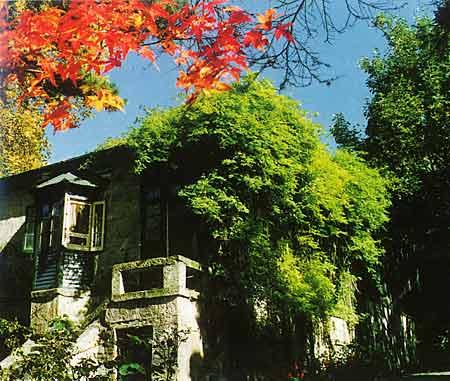
 |
| Lushan National Park (CNTV) |
Mount Lushan also has high human value. Hui Yuan, a monk in the Jin Dynasty, had established the Donglin Temple on the mountain and created the Pure Land of Buddhism. He had made the mountain an important, sacred religious site in China's feudal era. In the 5th century, Lu Xiujing, a Taoist priest from the Southern Dynasties, had found the South Tianshi Dao School, or "Celestial Path" sect. Ma Zudao from the Tang Dynasty founded the Rinzai School and Weiyang School, exerting great influence. In the Song Dynasty, there were over 361 temples on the mountain and since the Ming and Qing dynasties, Muslims, Christians and Catholics also built temples and preached on the mountain. After 1,600 years of development, a rare phenomenon of "five religions on one mountain" appeared on Mount Lushan.
The White Deer Grotto Academy, which was established in 940, and was hailed as "the first academy in China" and "the head of the world's academies." It was the center of all ancient Chinese educational and idealist philosophical institutions and also one of the highest institutions in the Song Dynasty of China. The White Deer Grotto Academy, Suiyang Academy, Shigu Academy and Yuelu Academy were called the "four academies under heaven." Zhu Xi, a famous idealist philosopher and scholar from the Song Dynasty, had proposed his theories there, which became the norm of ancient Chinese thoughts and even had important influence in the history of education around the world. The White Deer Grotto Academy had experienced the whole process from its establishment in the late Tang Dynasty, to the prosperity of the Southern Song Dynasty and then to the decline and recovery in Ming and Qing dynasties. Its glory has forever gone, but its deep thought connotation still exert influence on the younger generations and its dense cultural deposits have made it a world-famous mountain with its culture and education.


















 Teenage crash victims were talented students
Teenage crash victims were talented students


![]()
